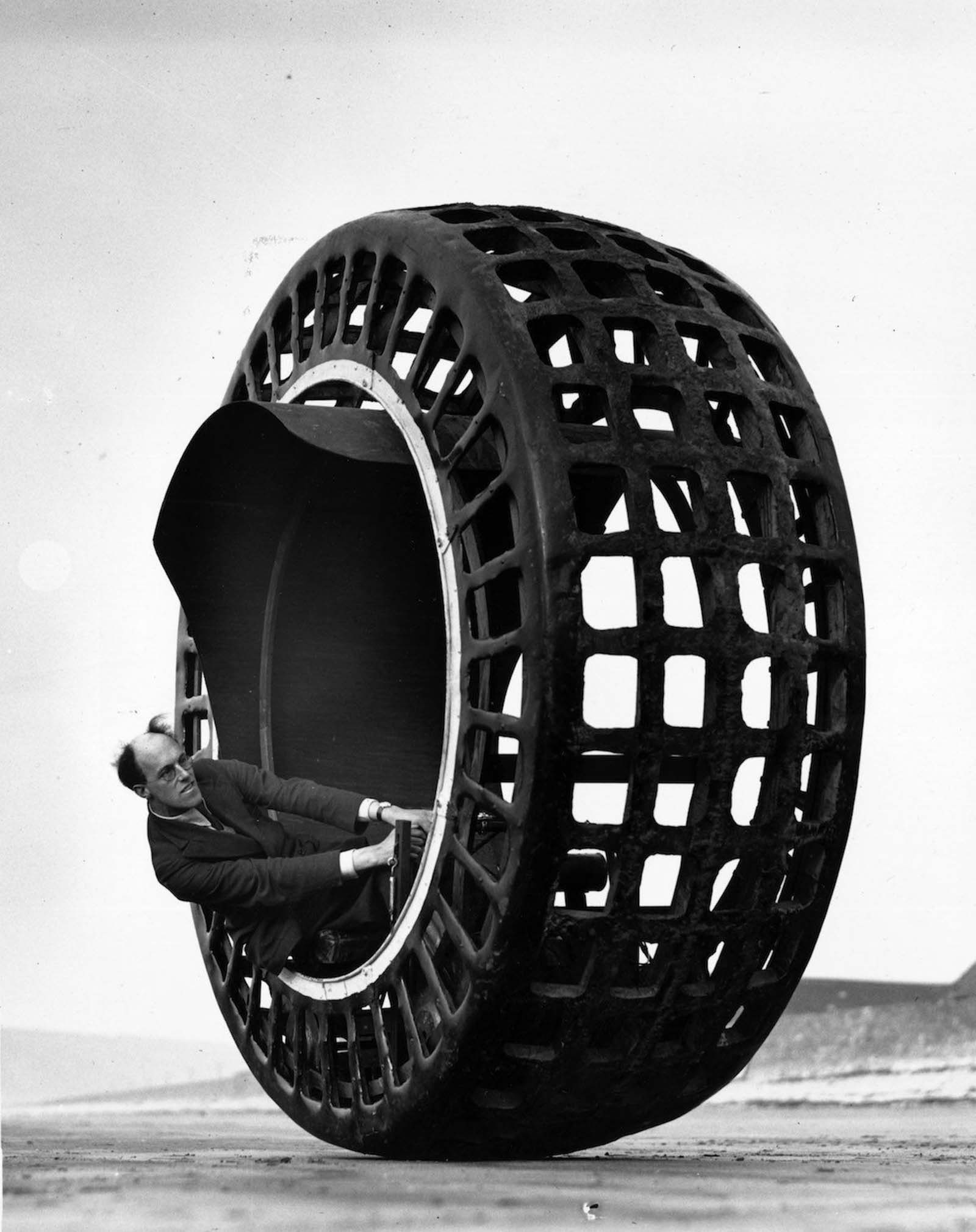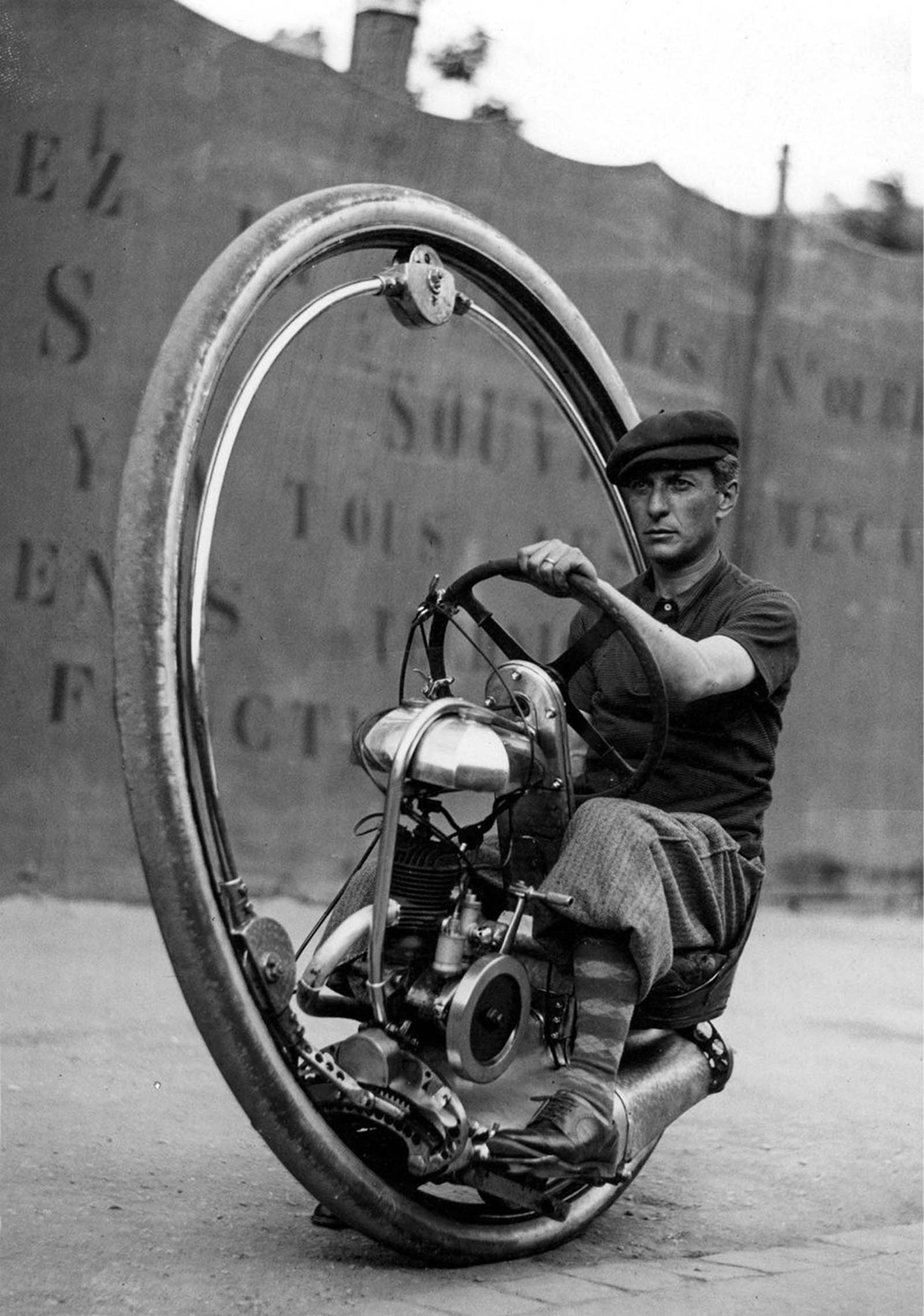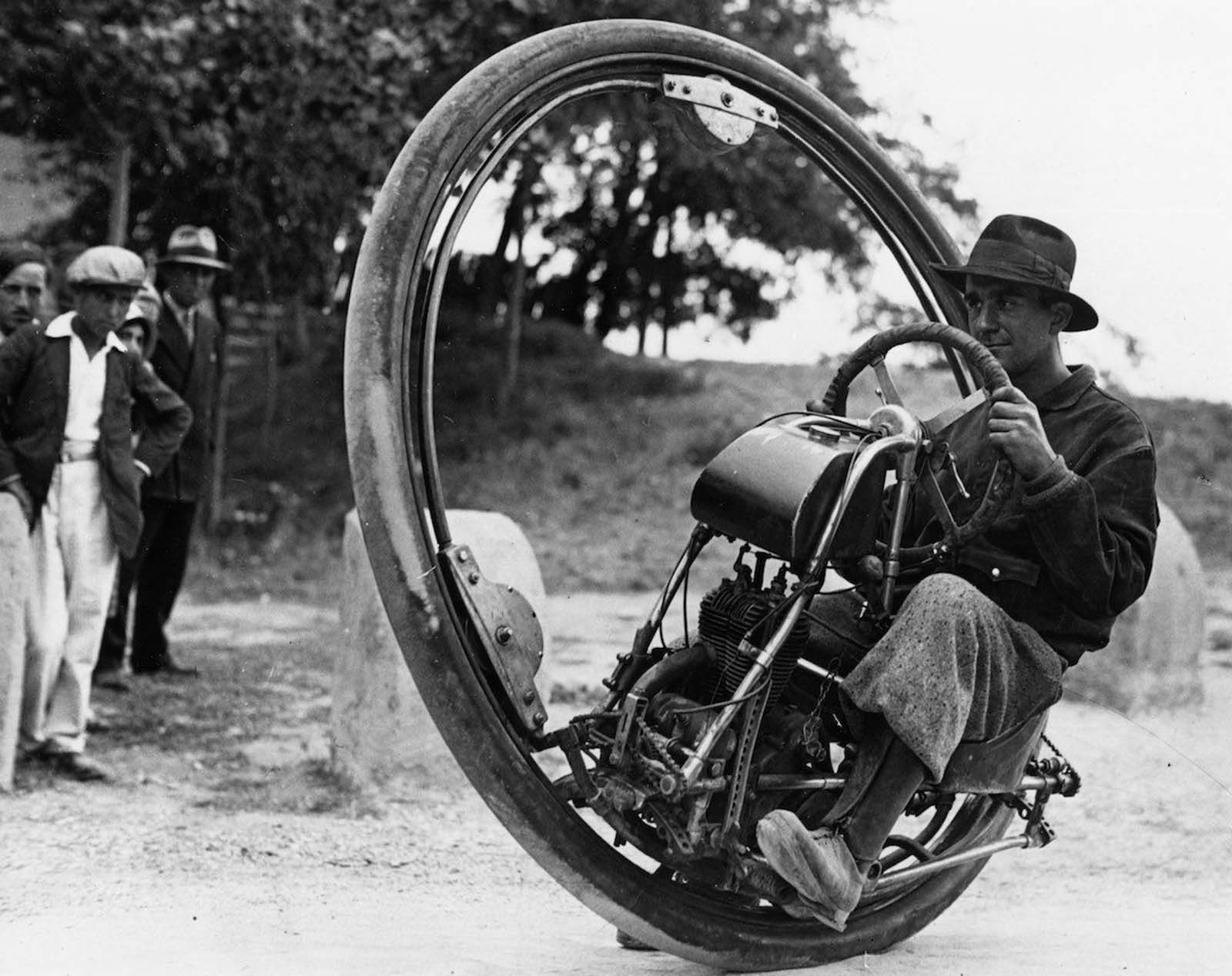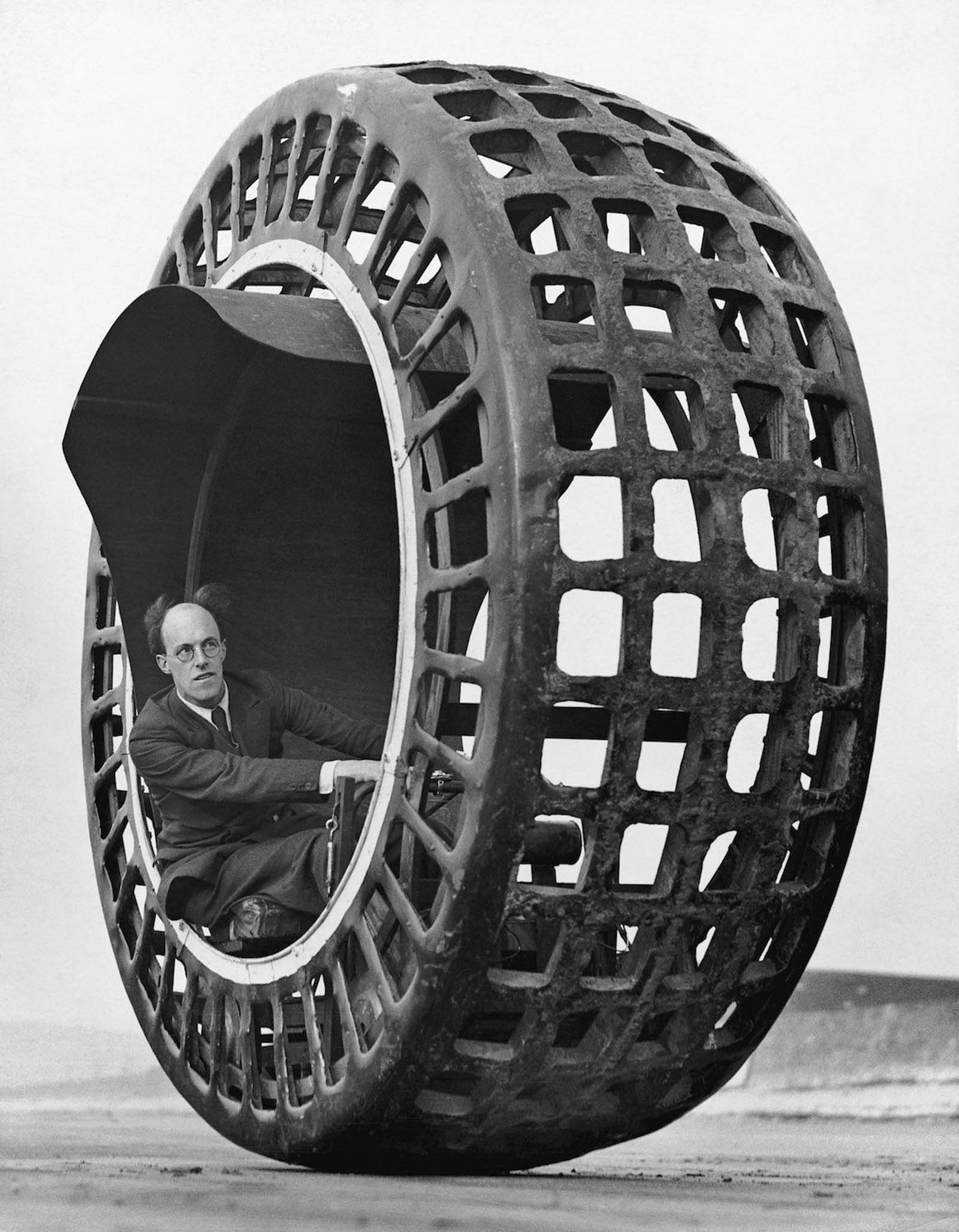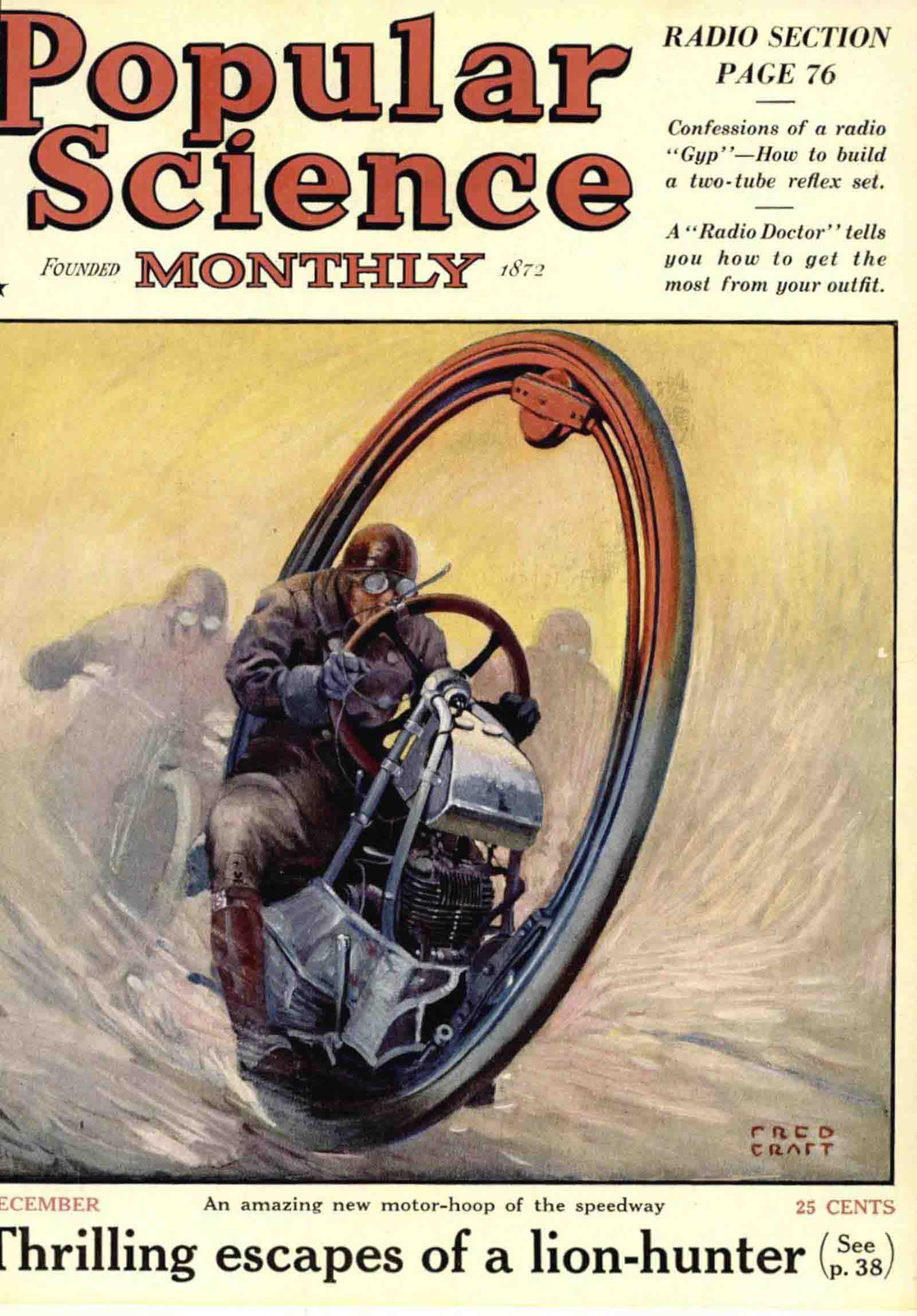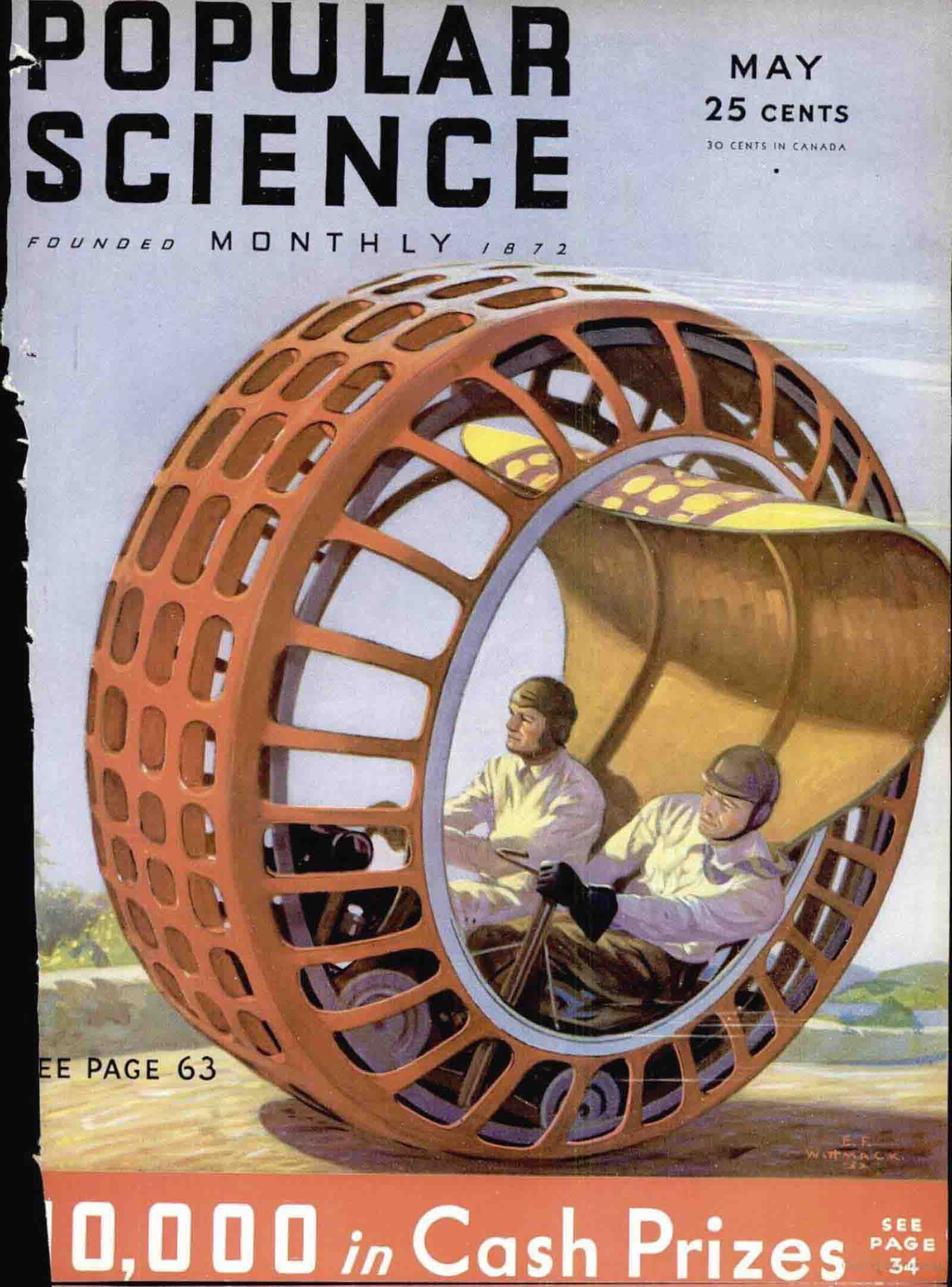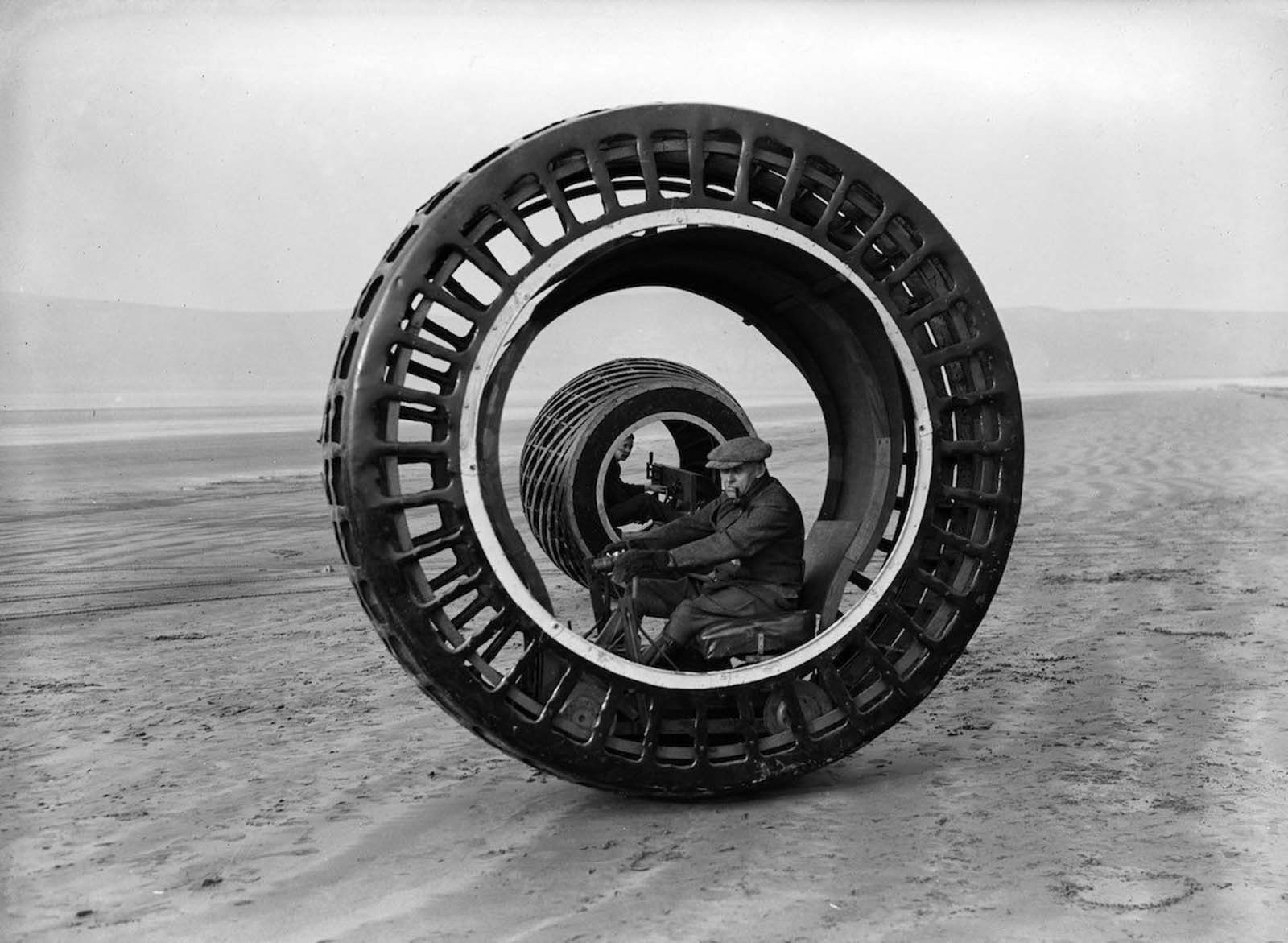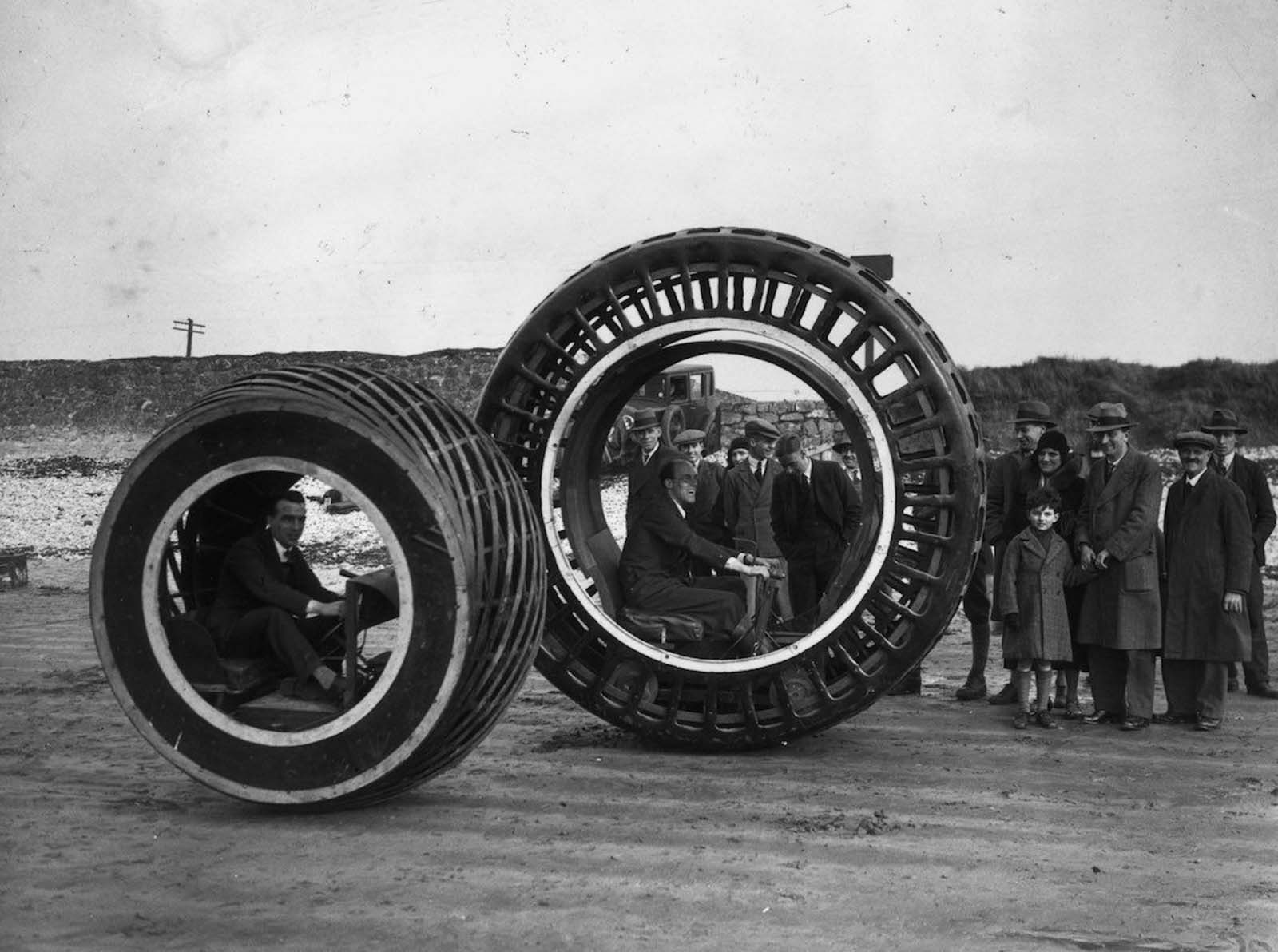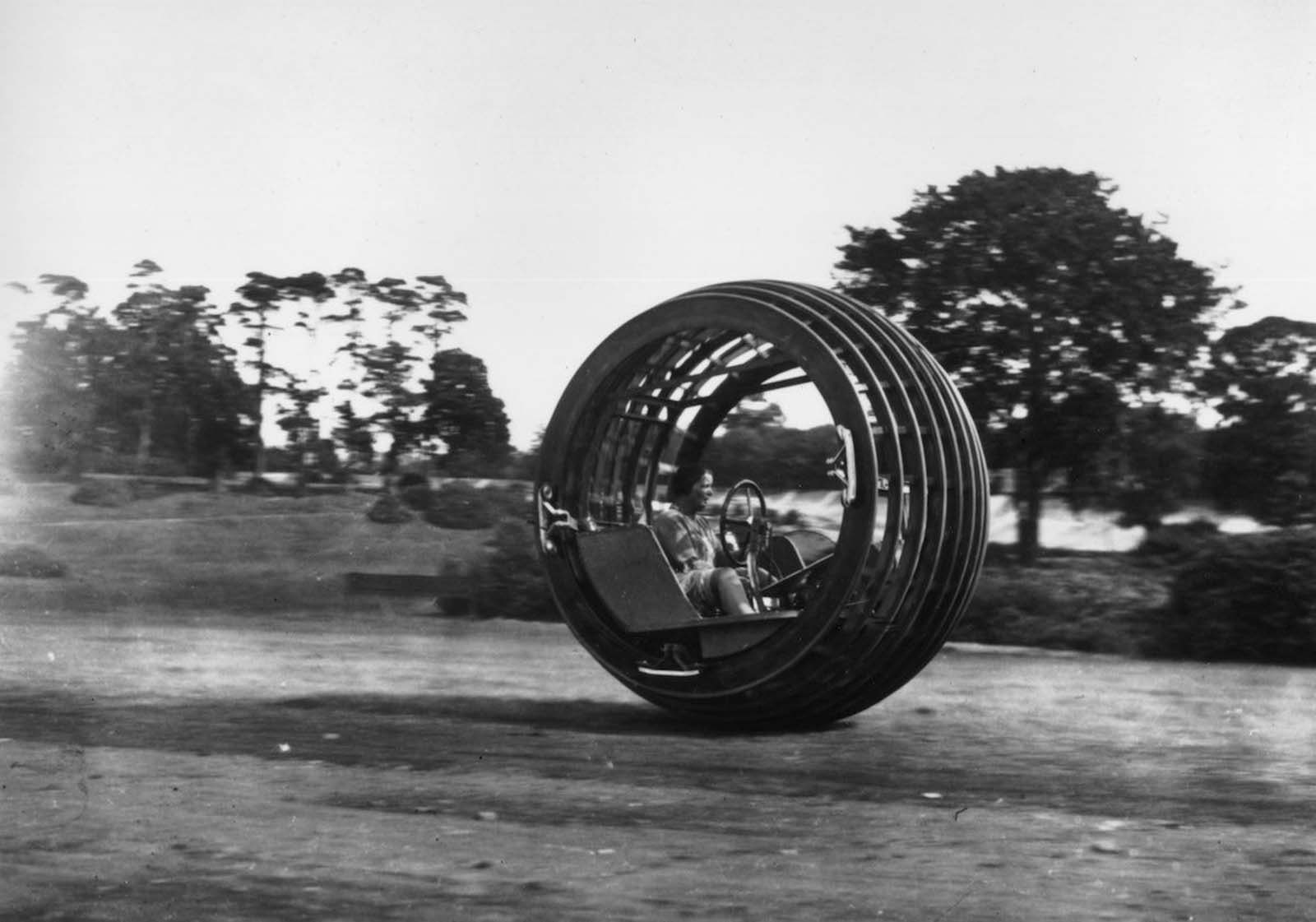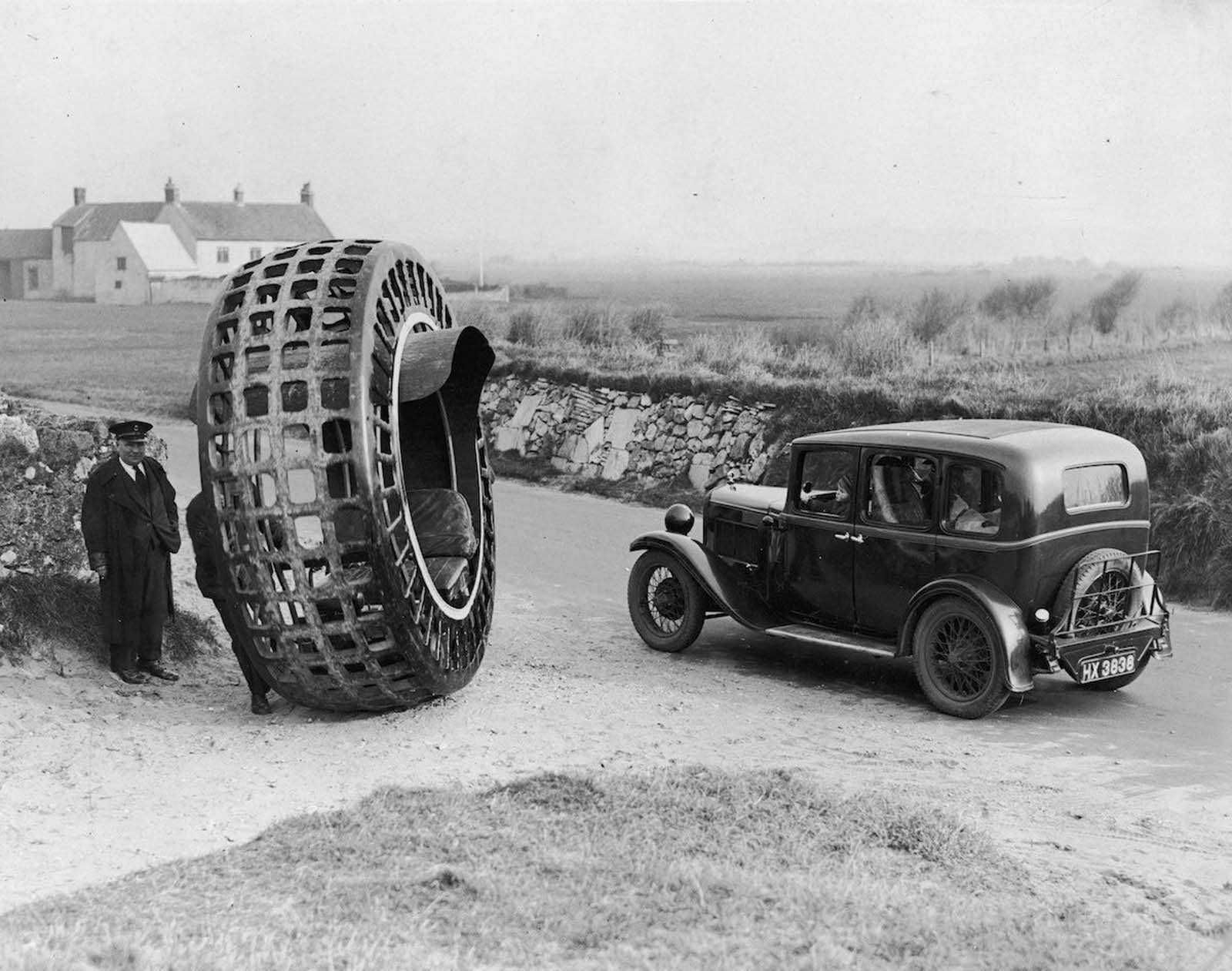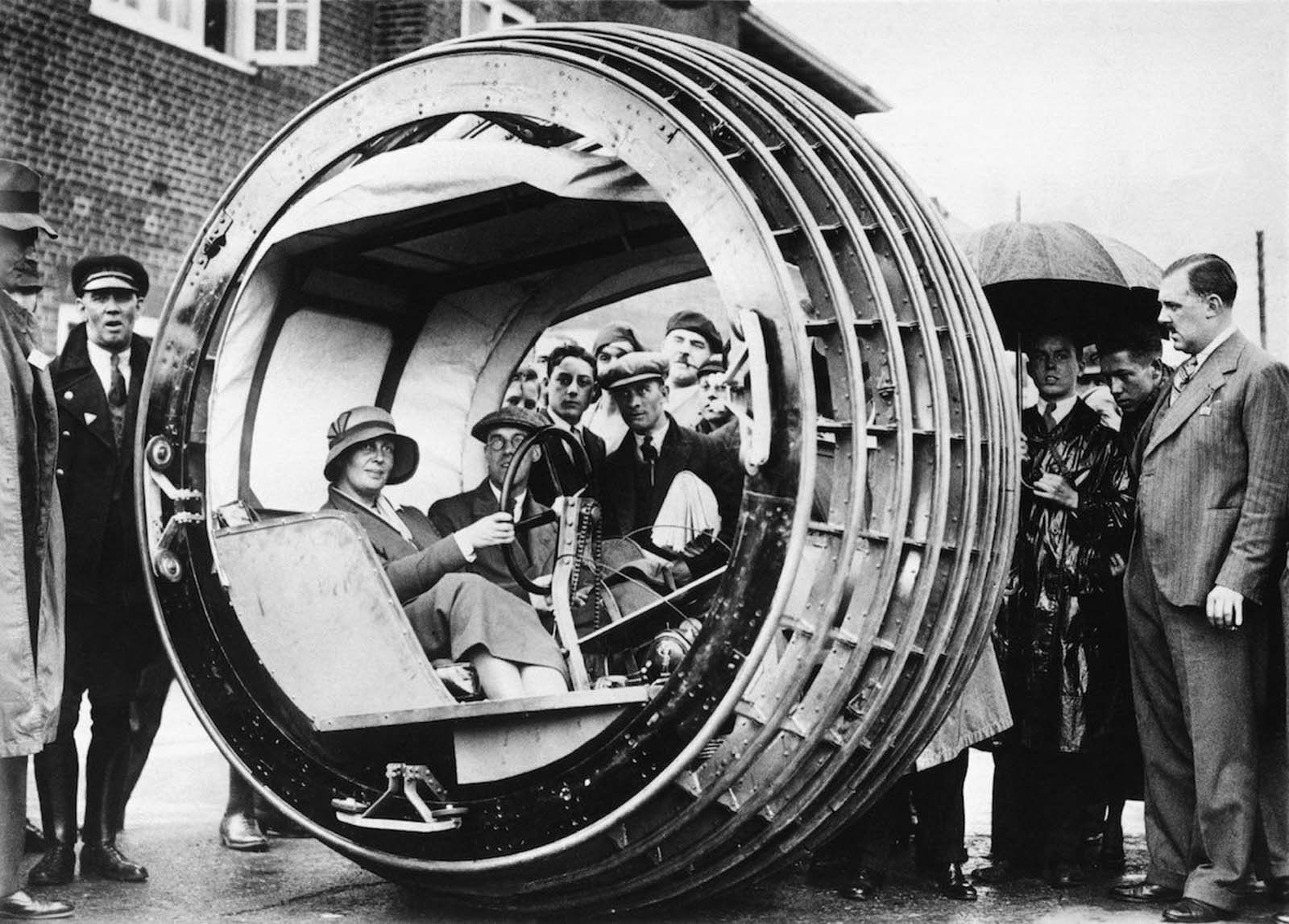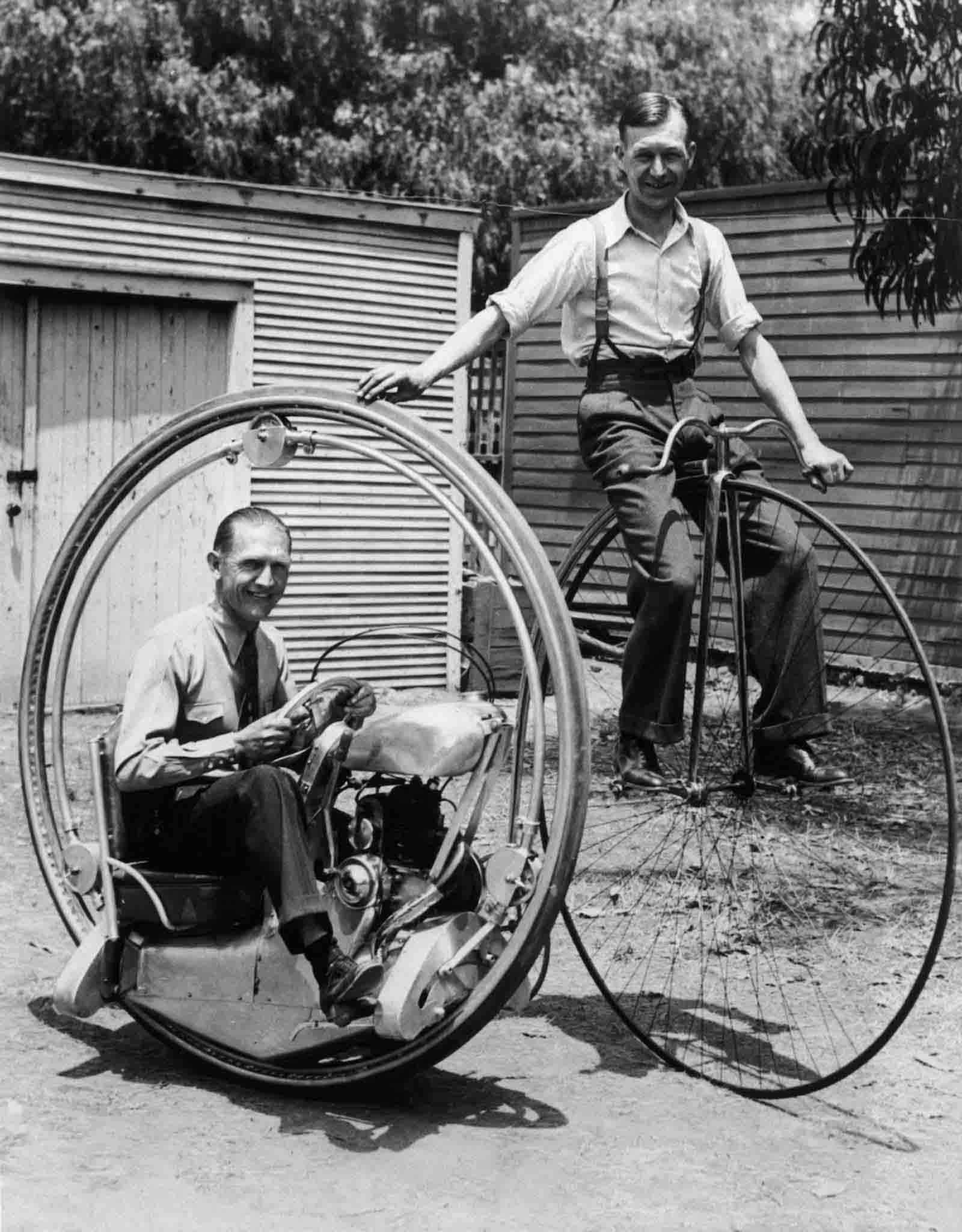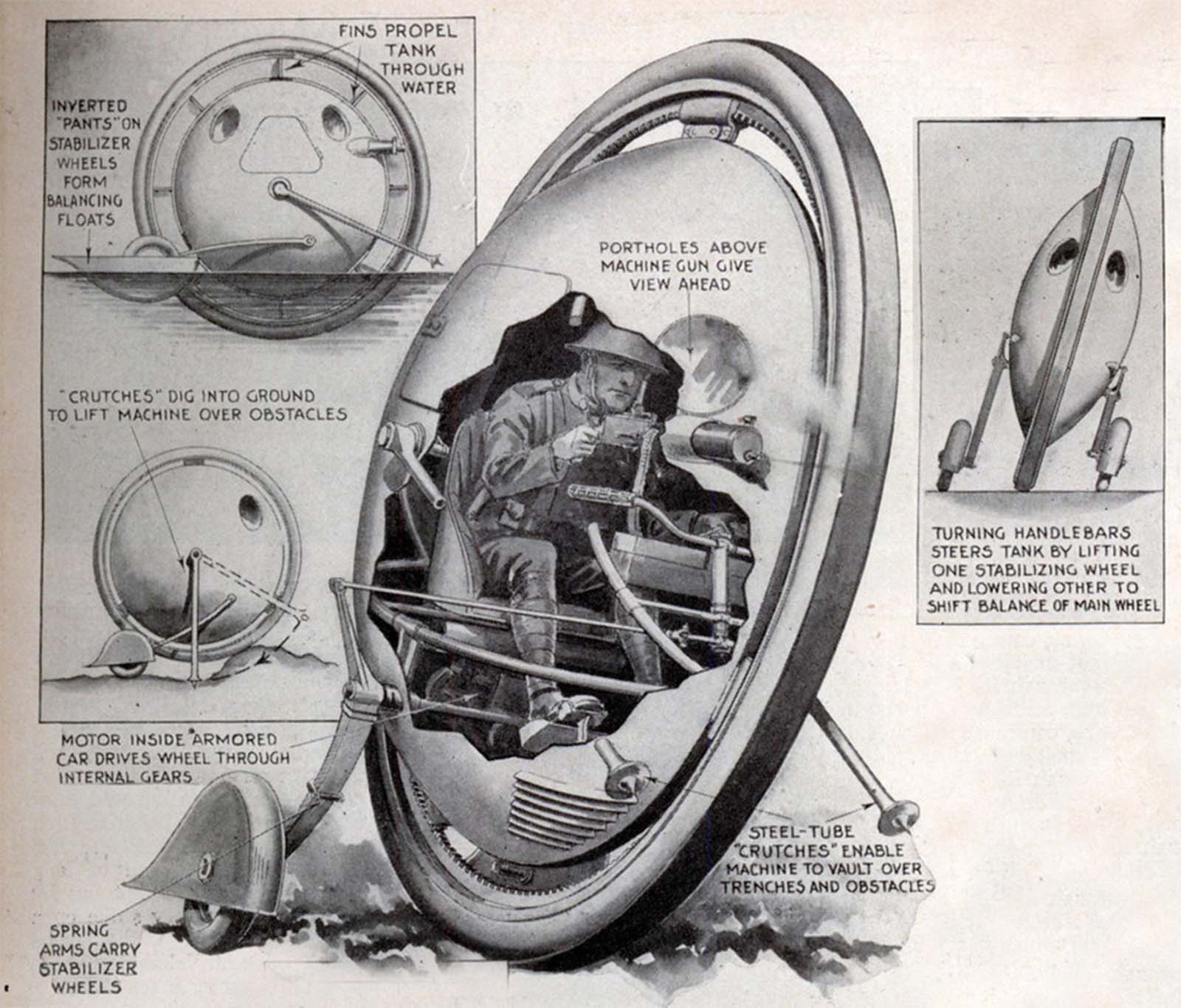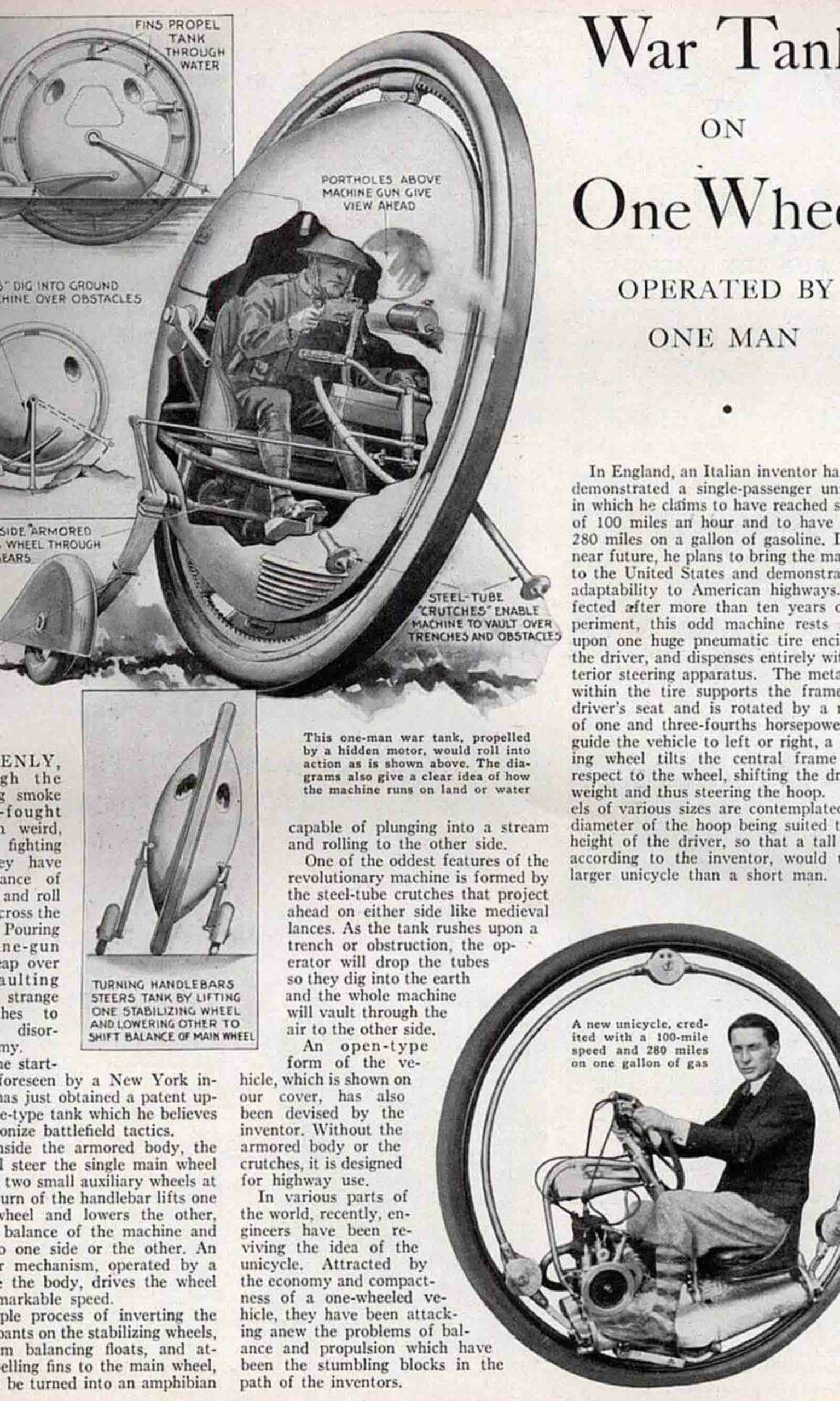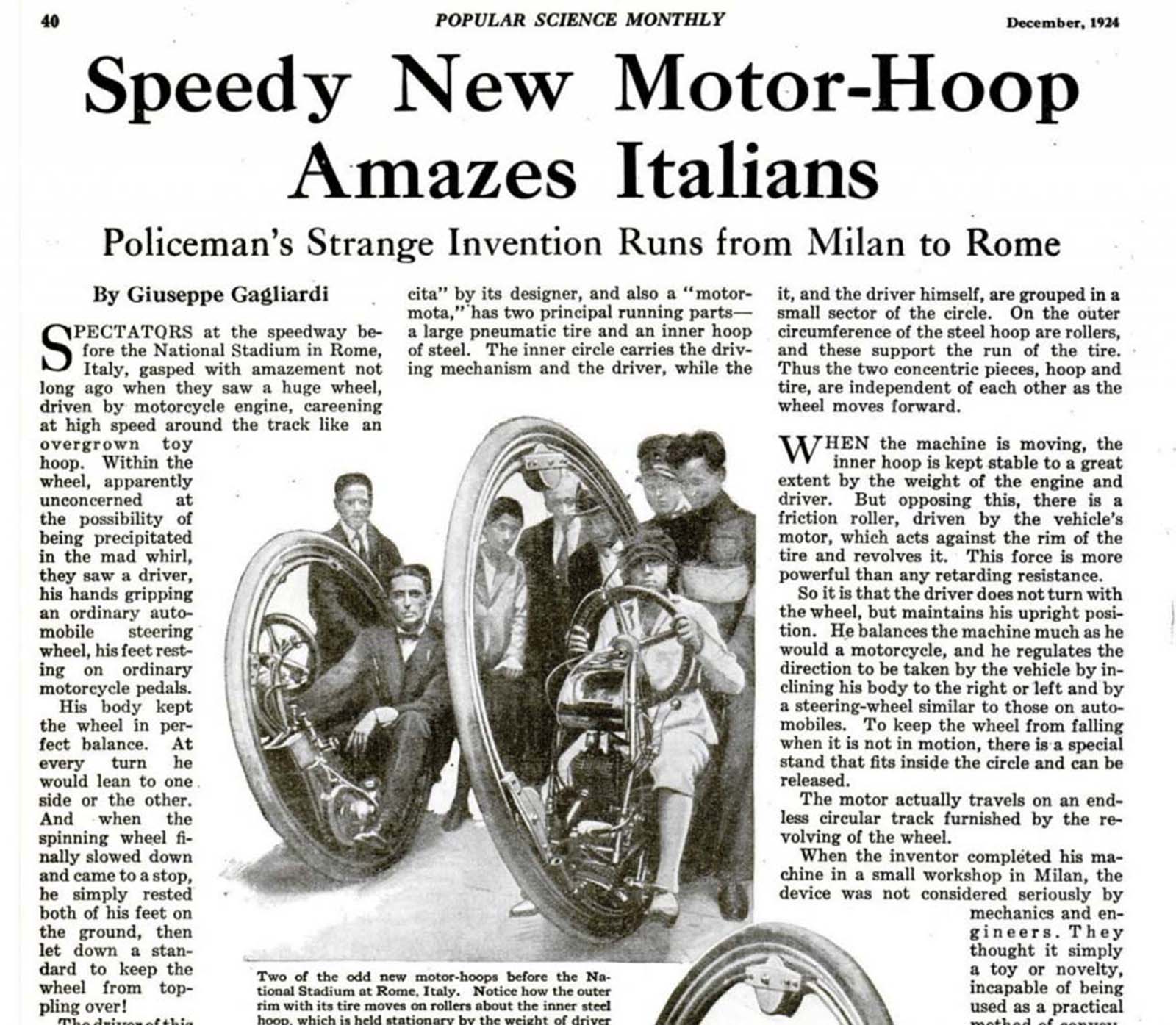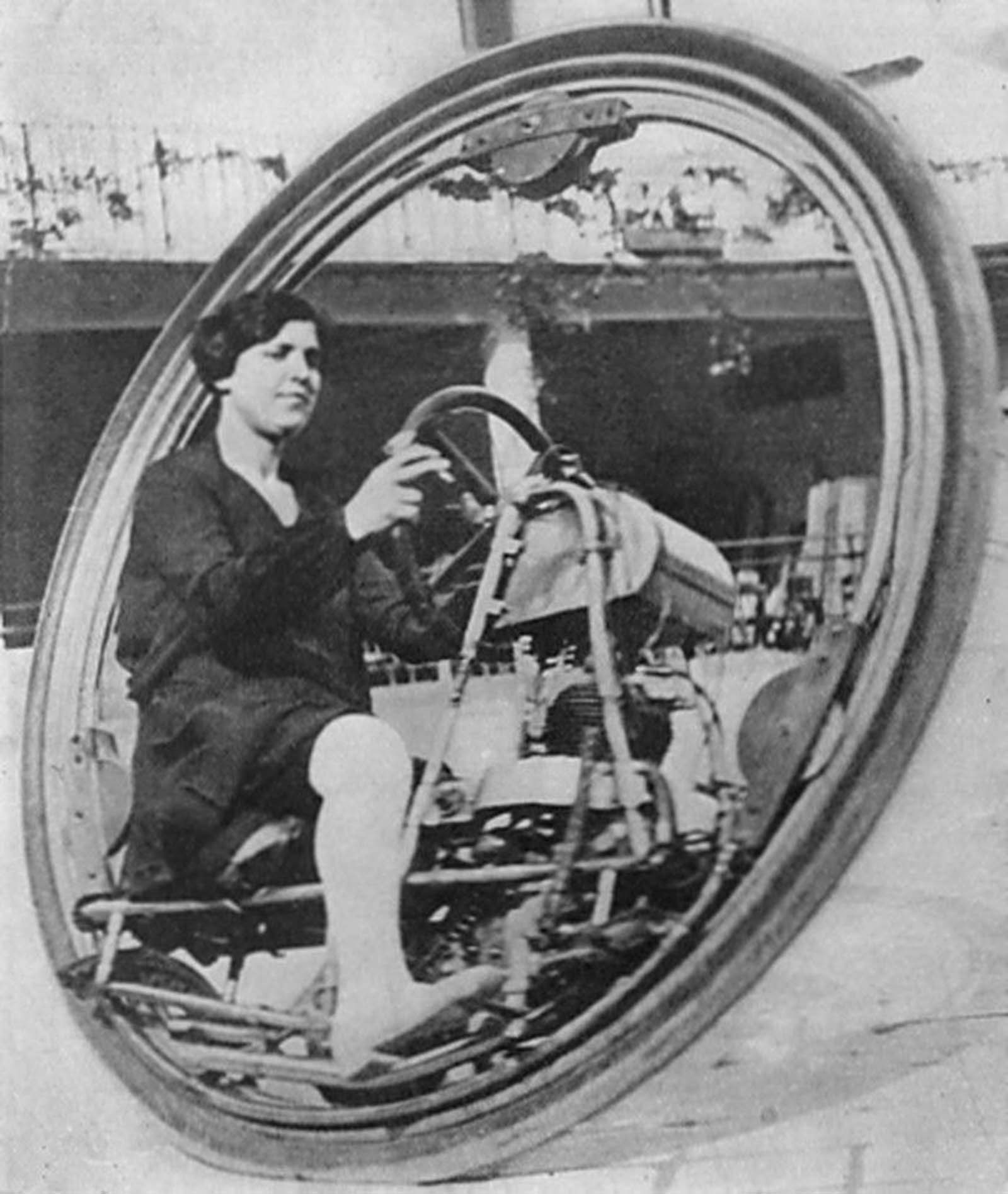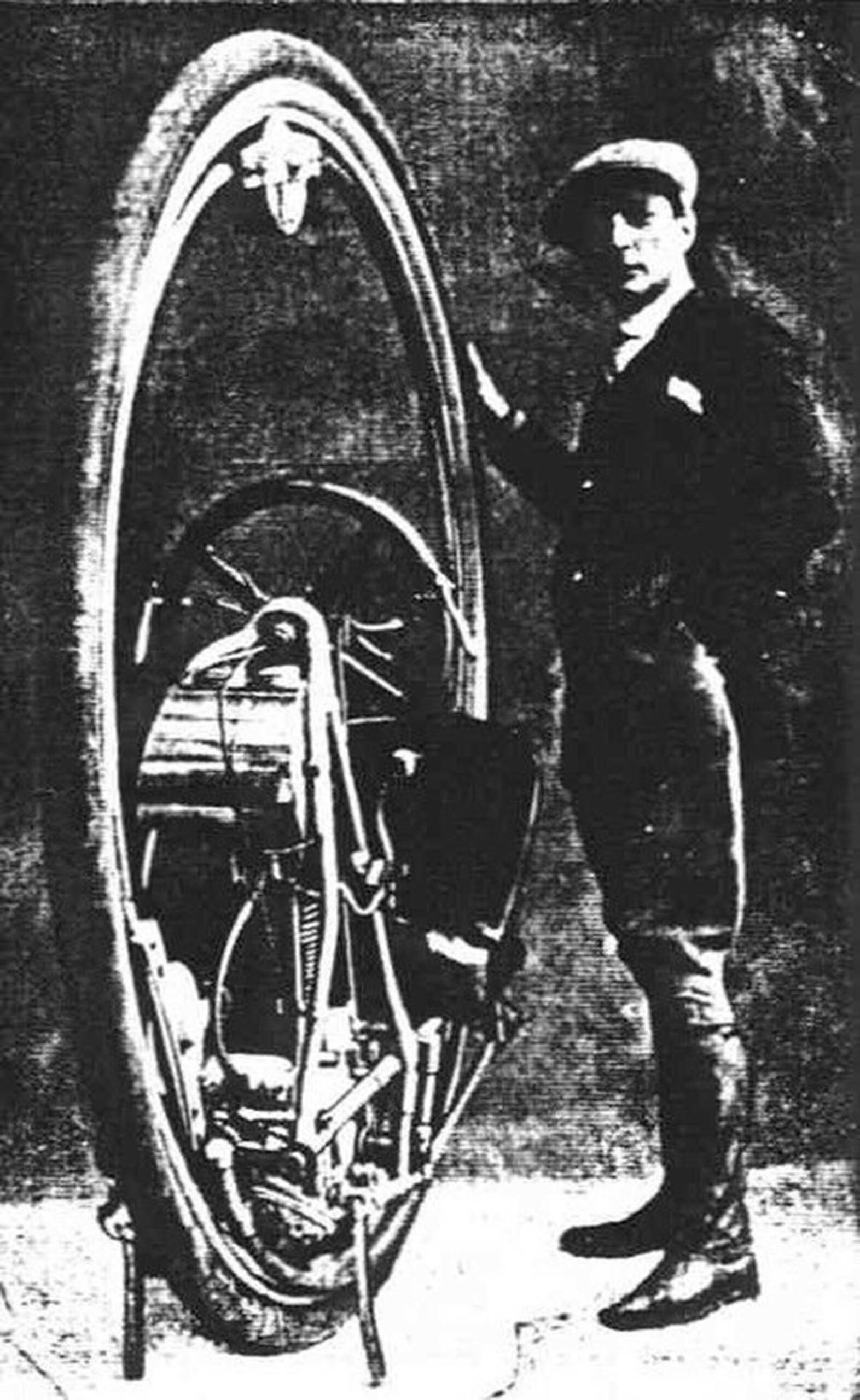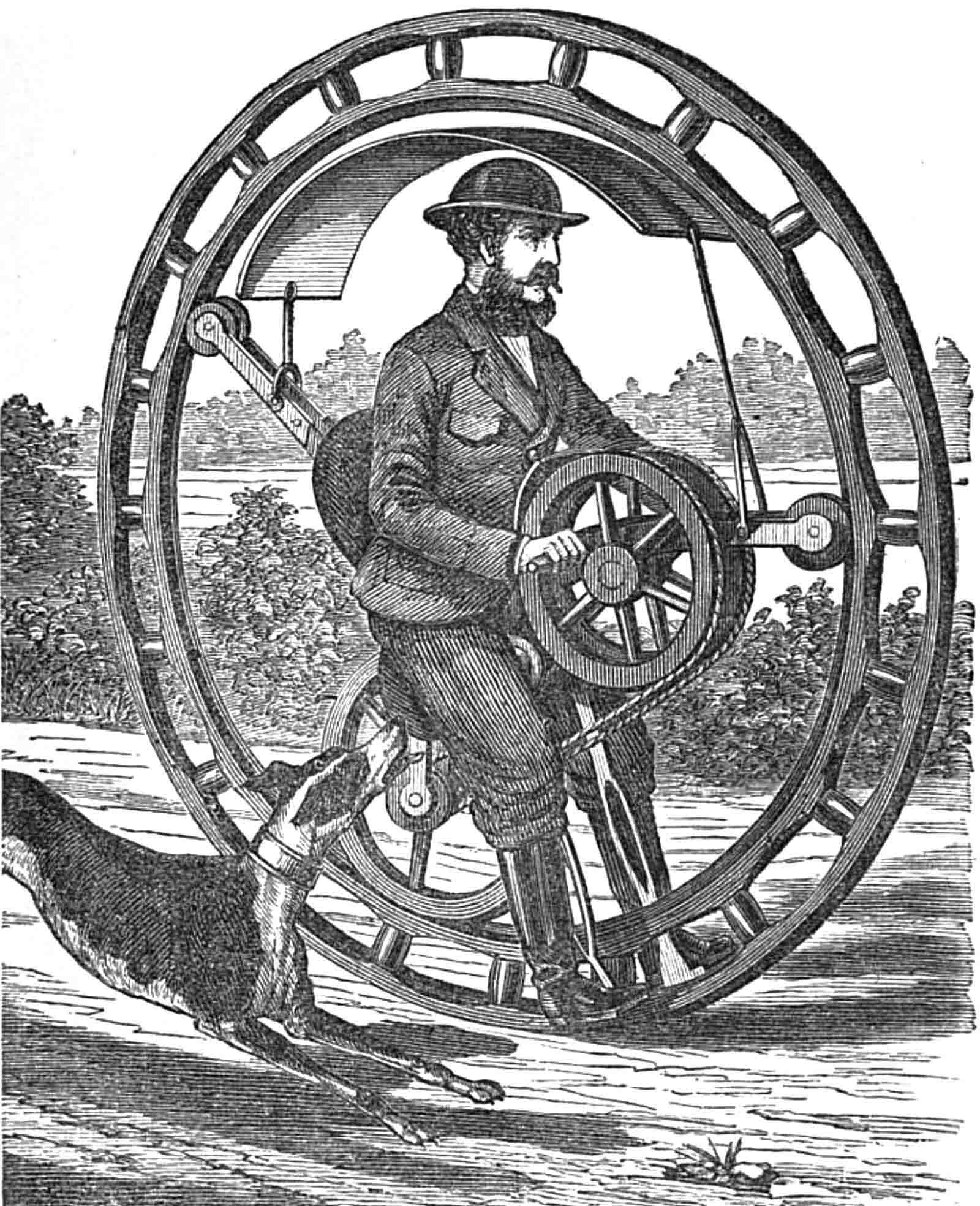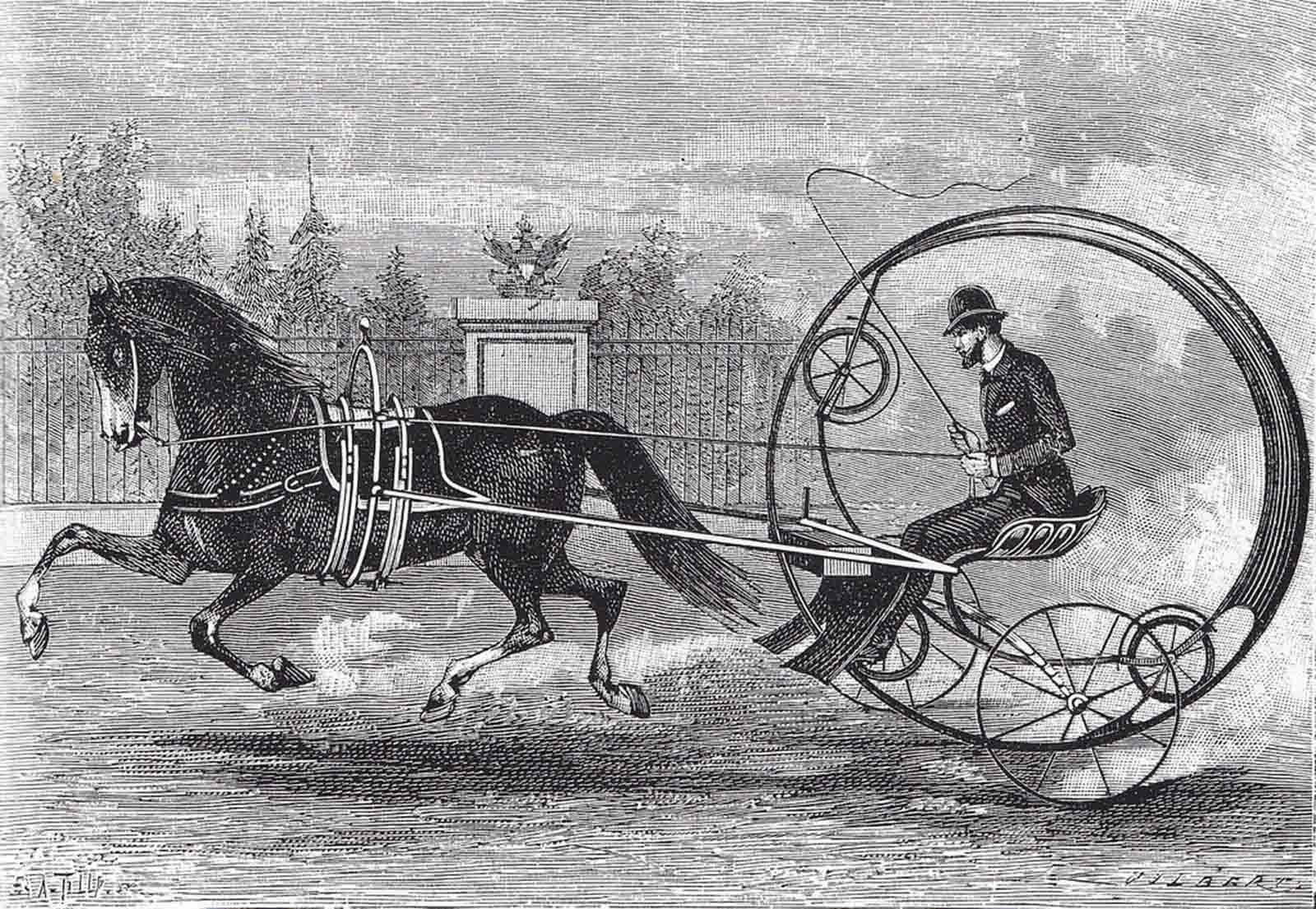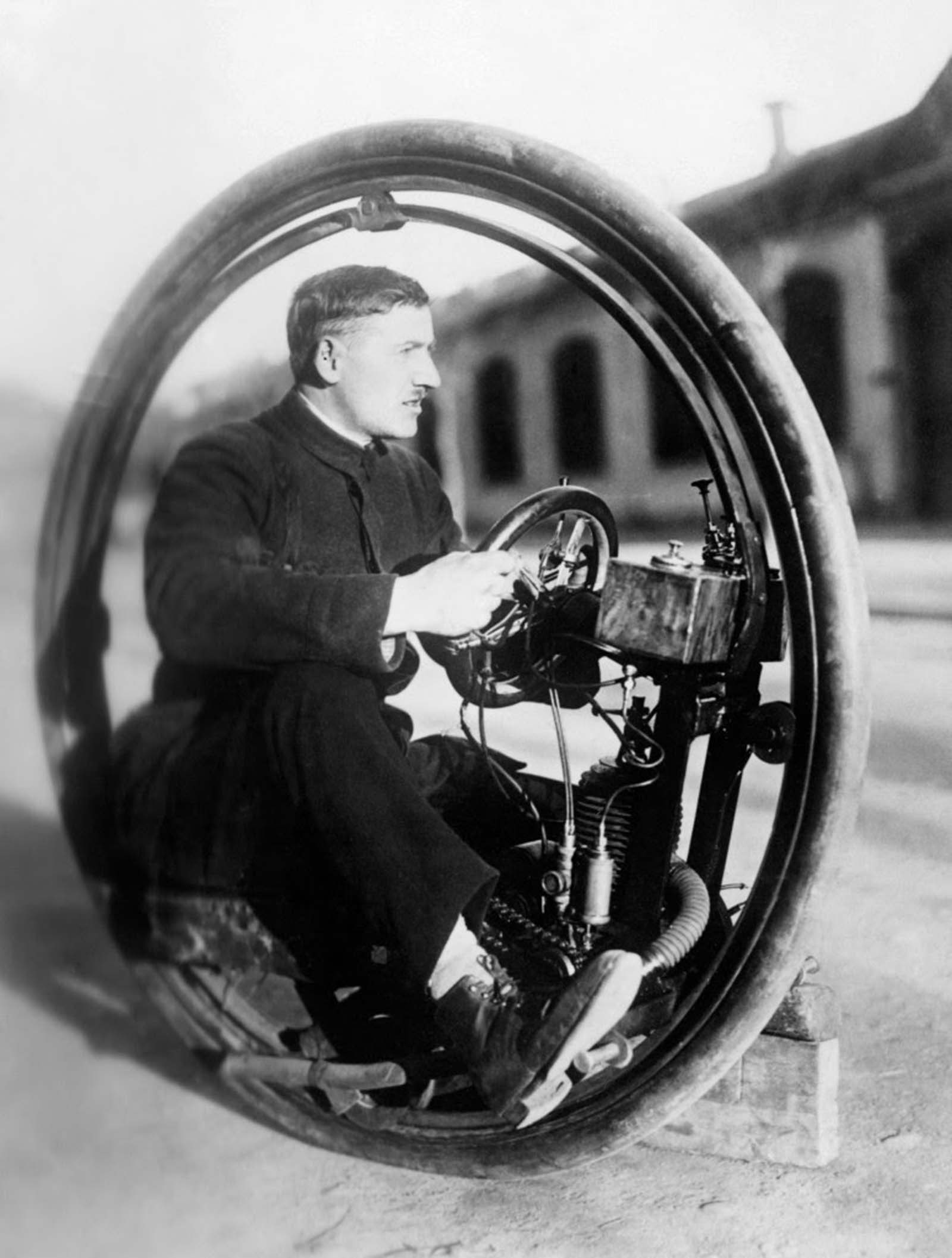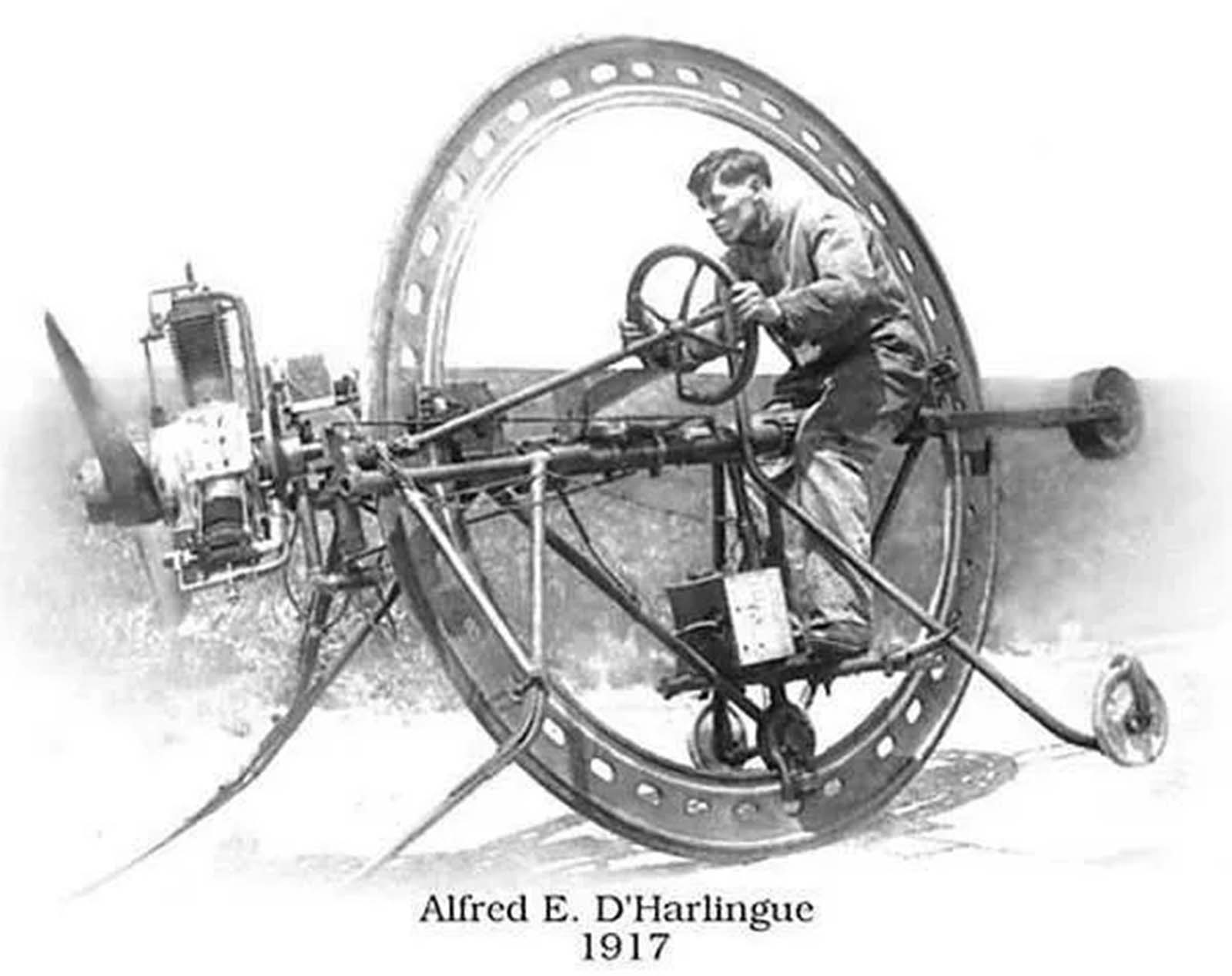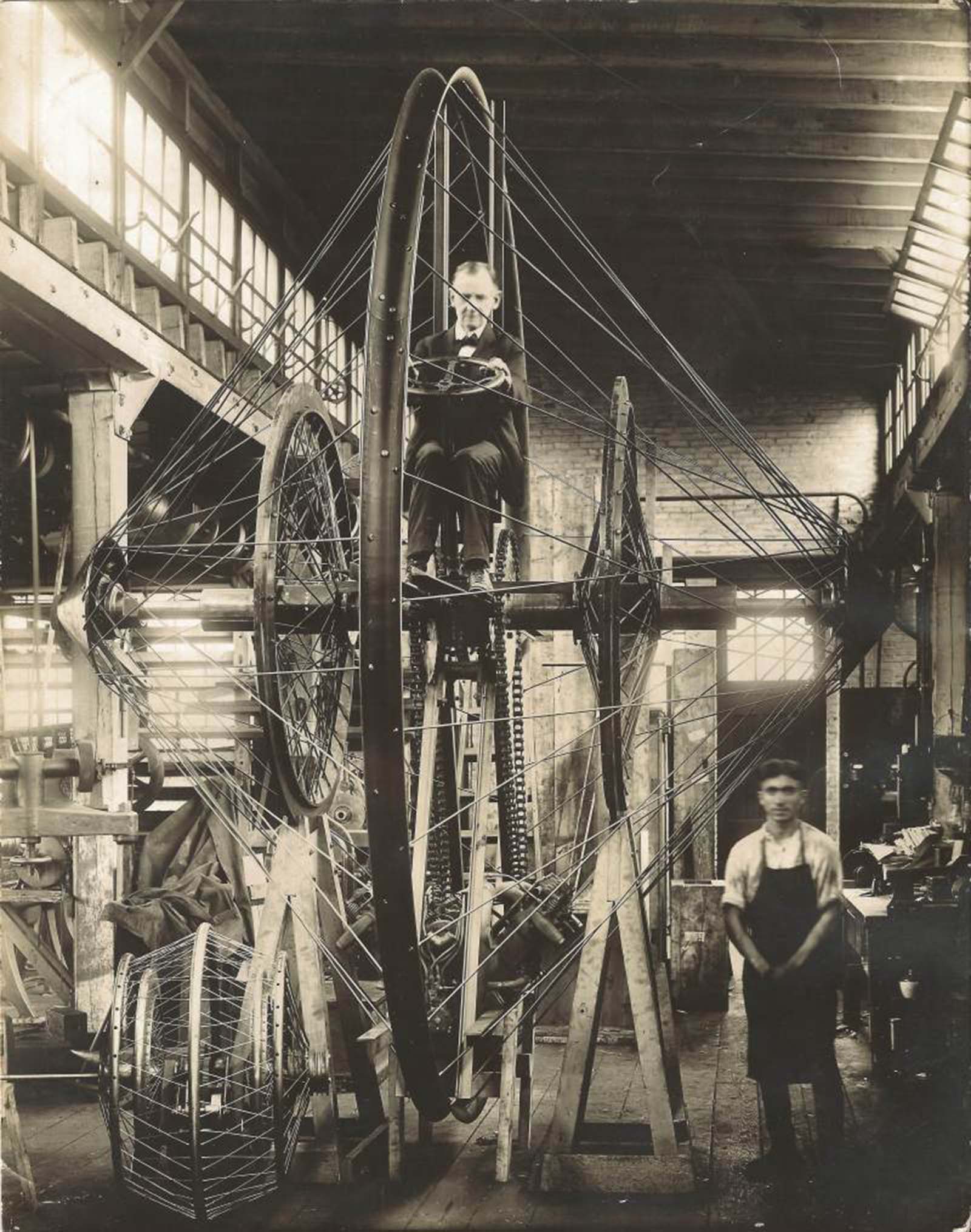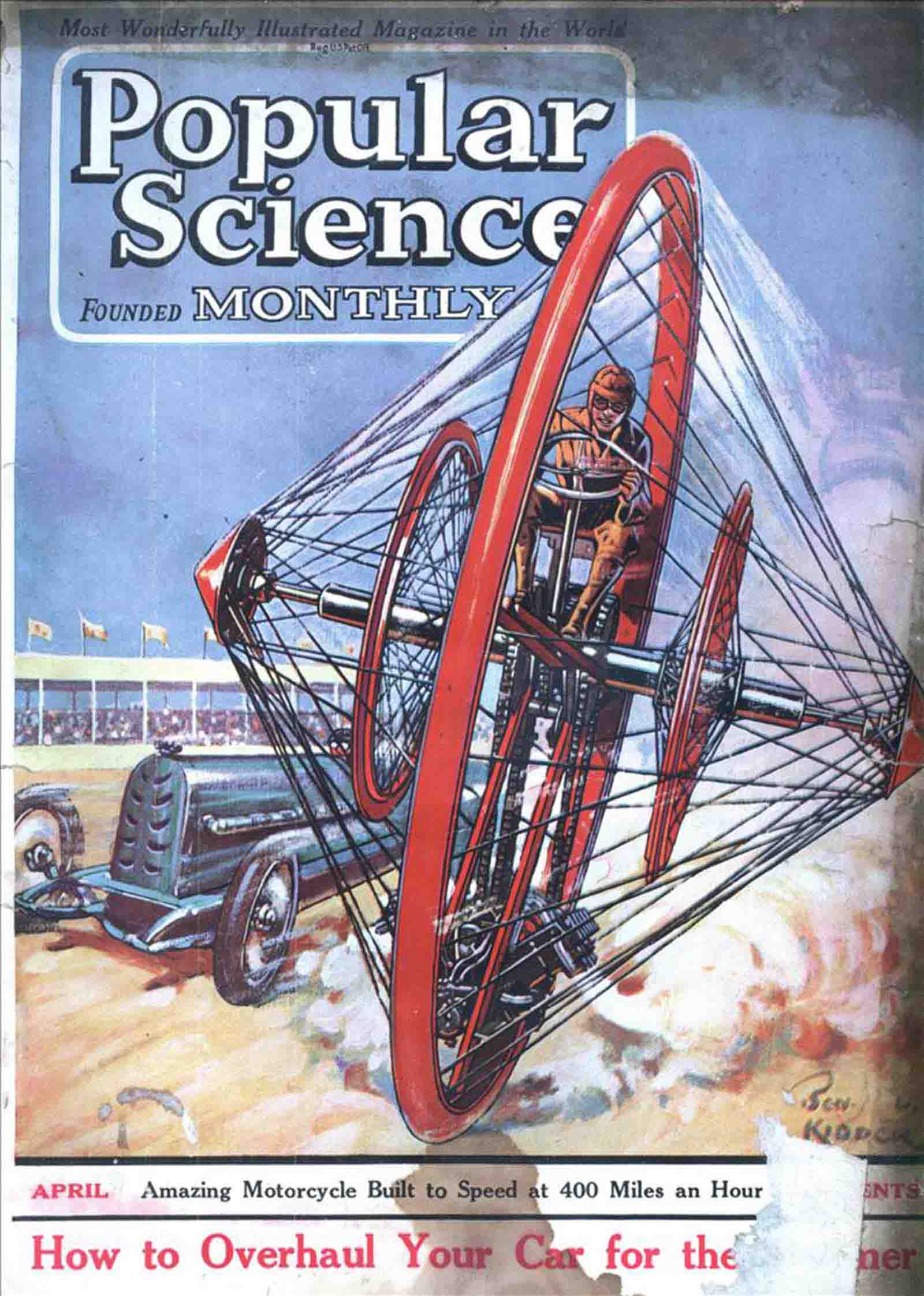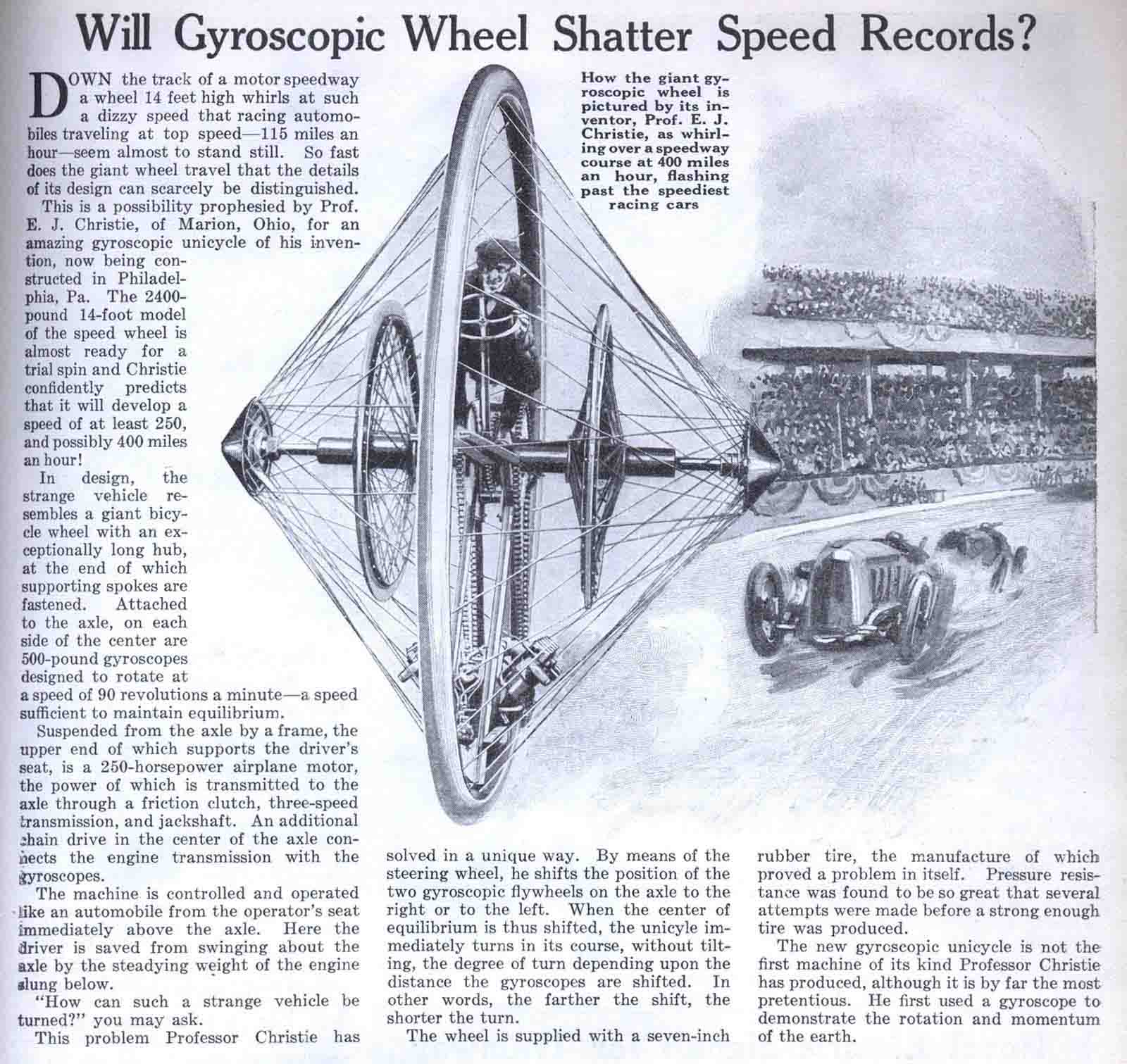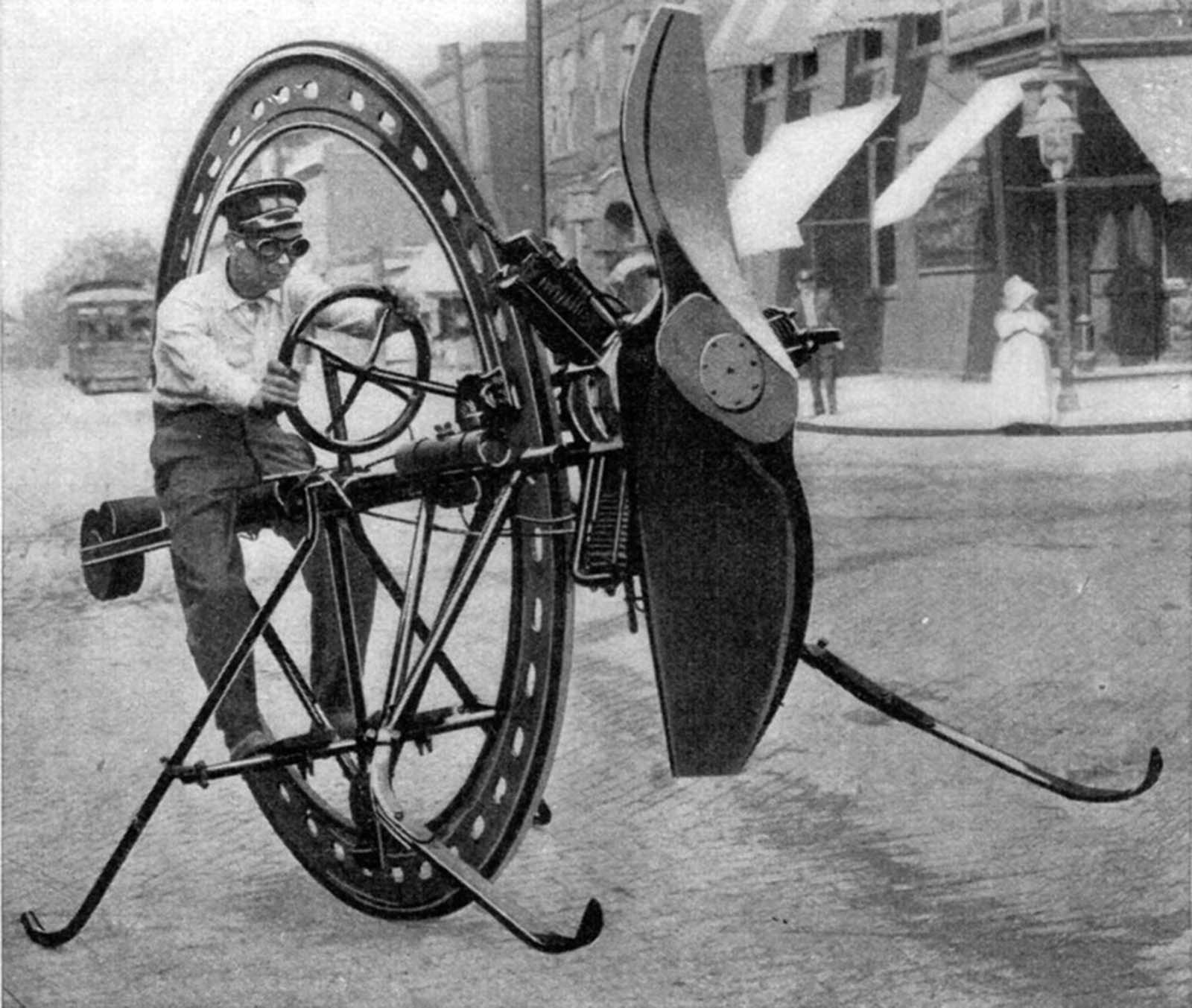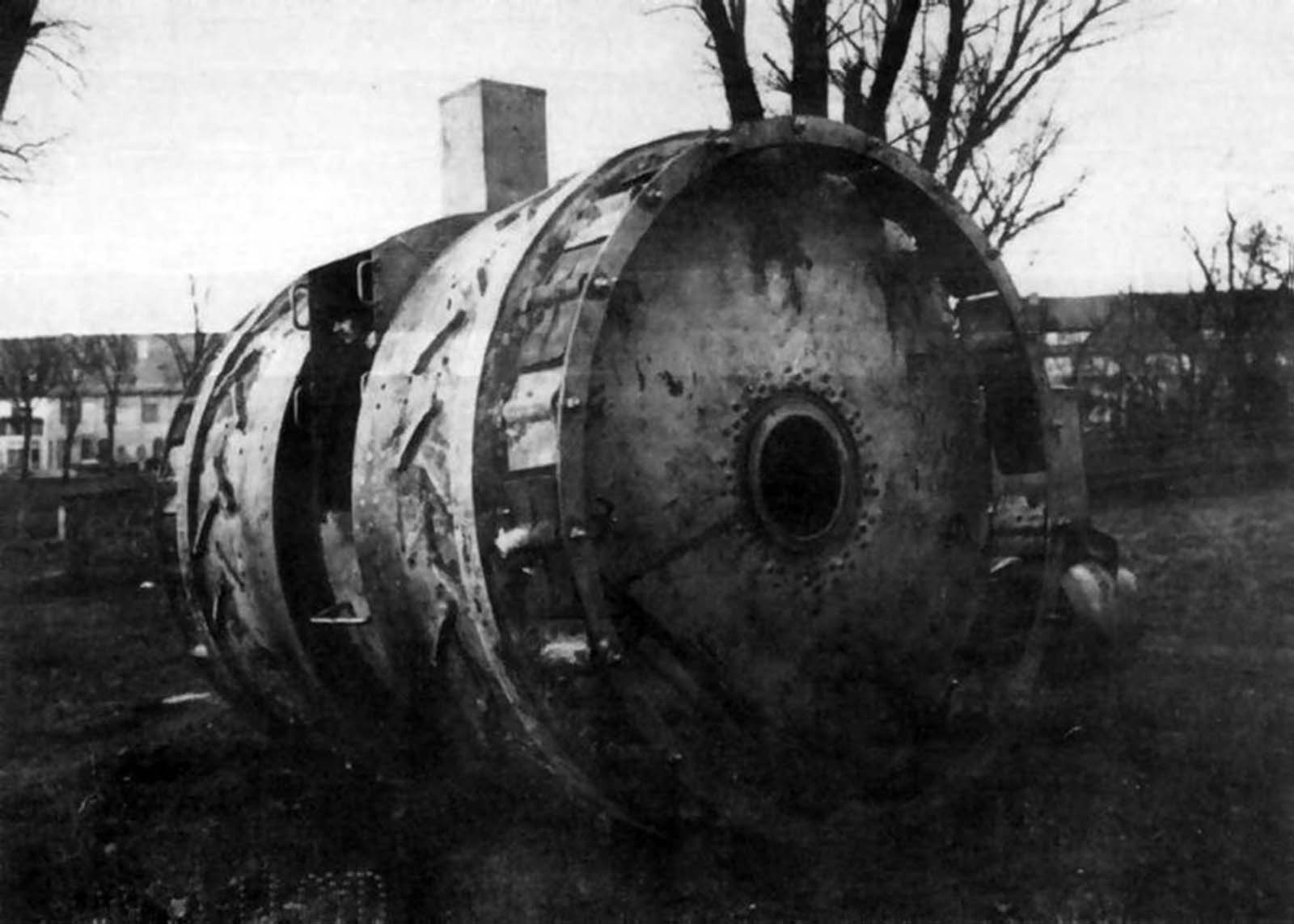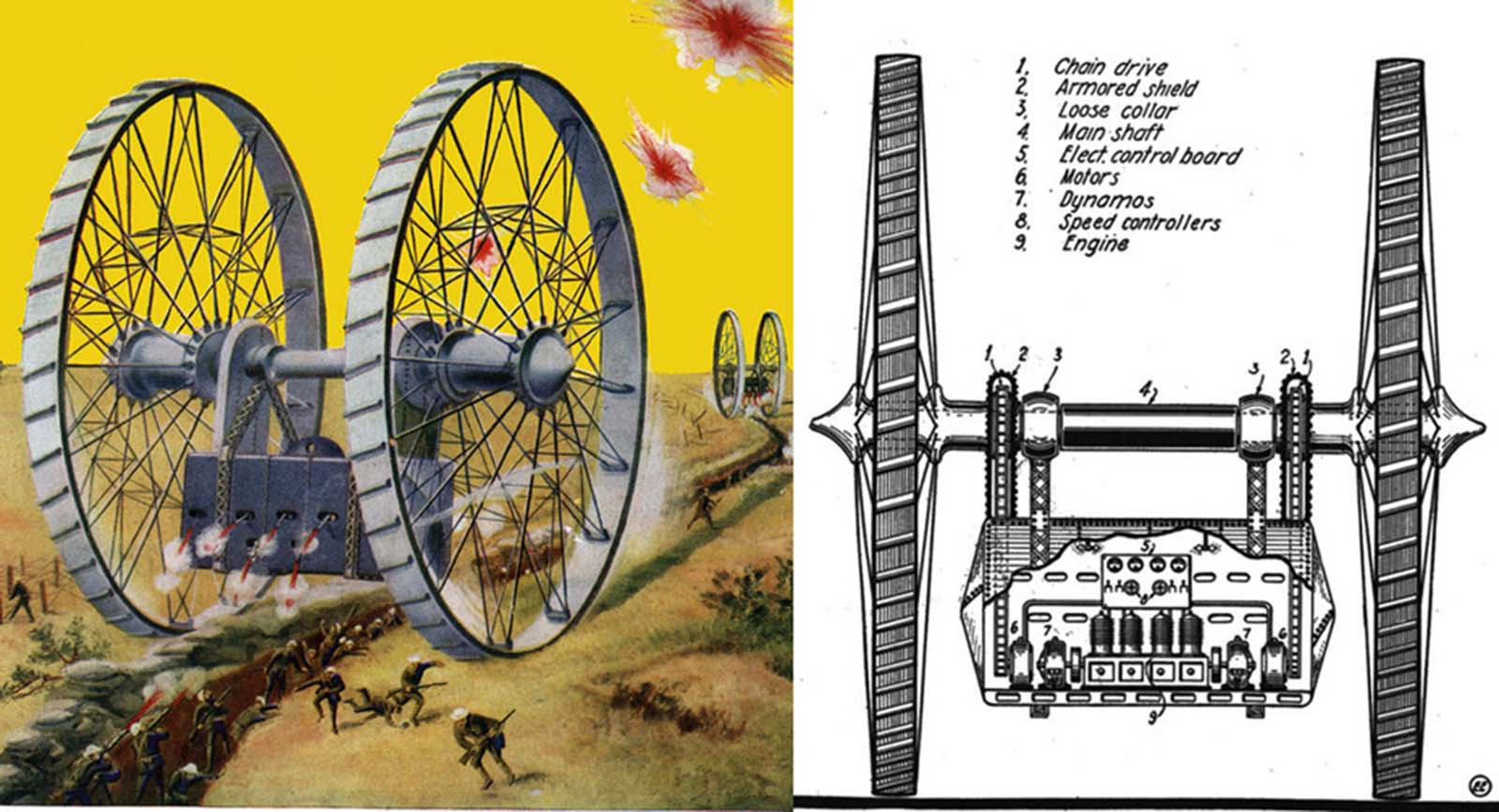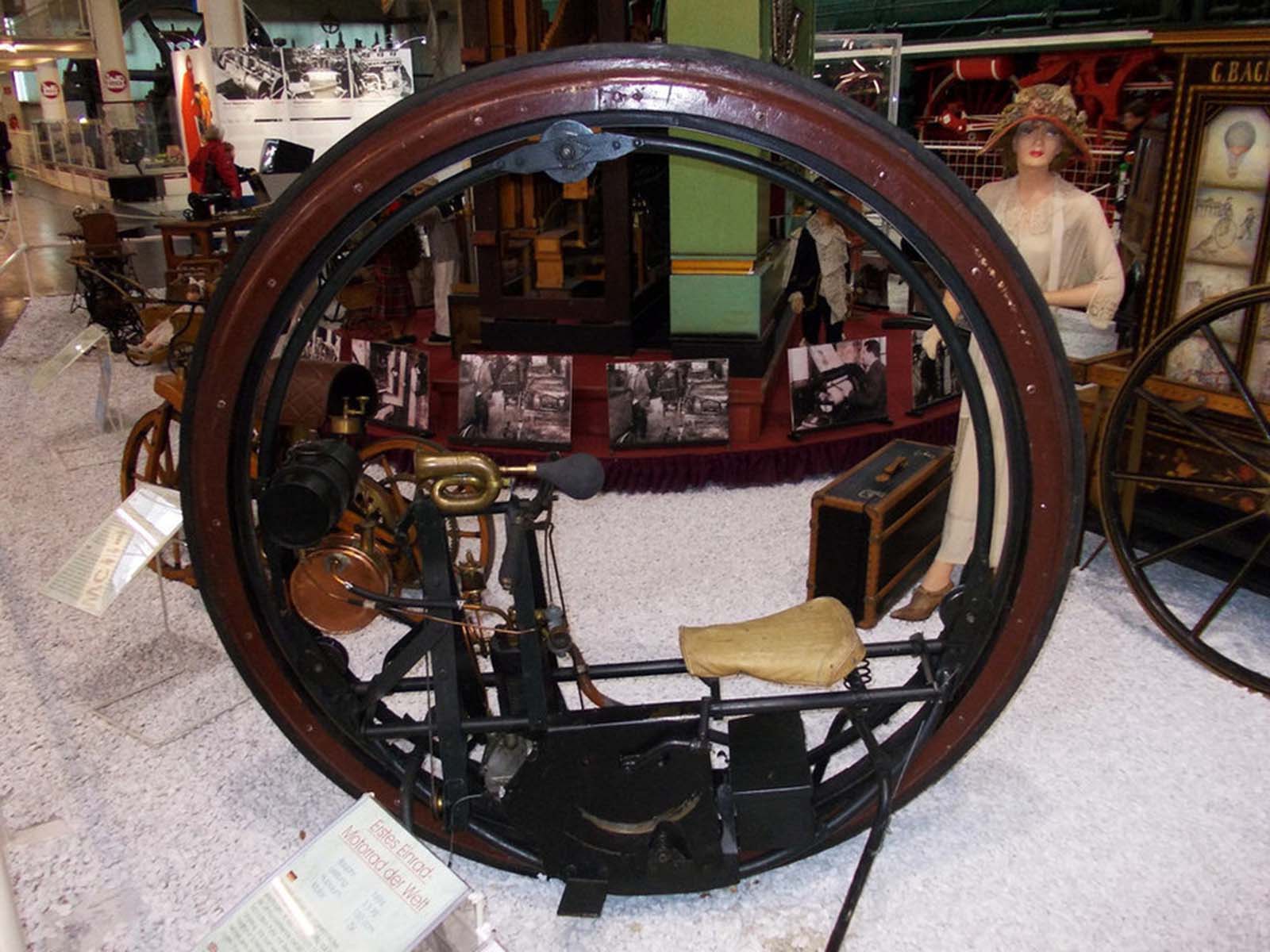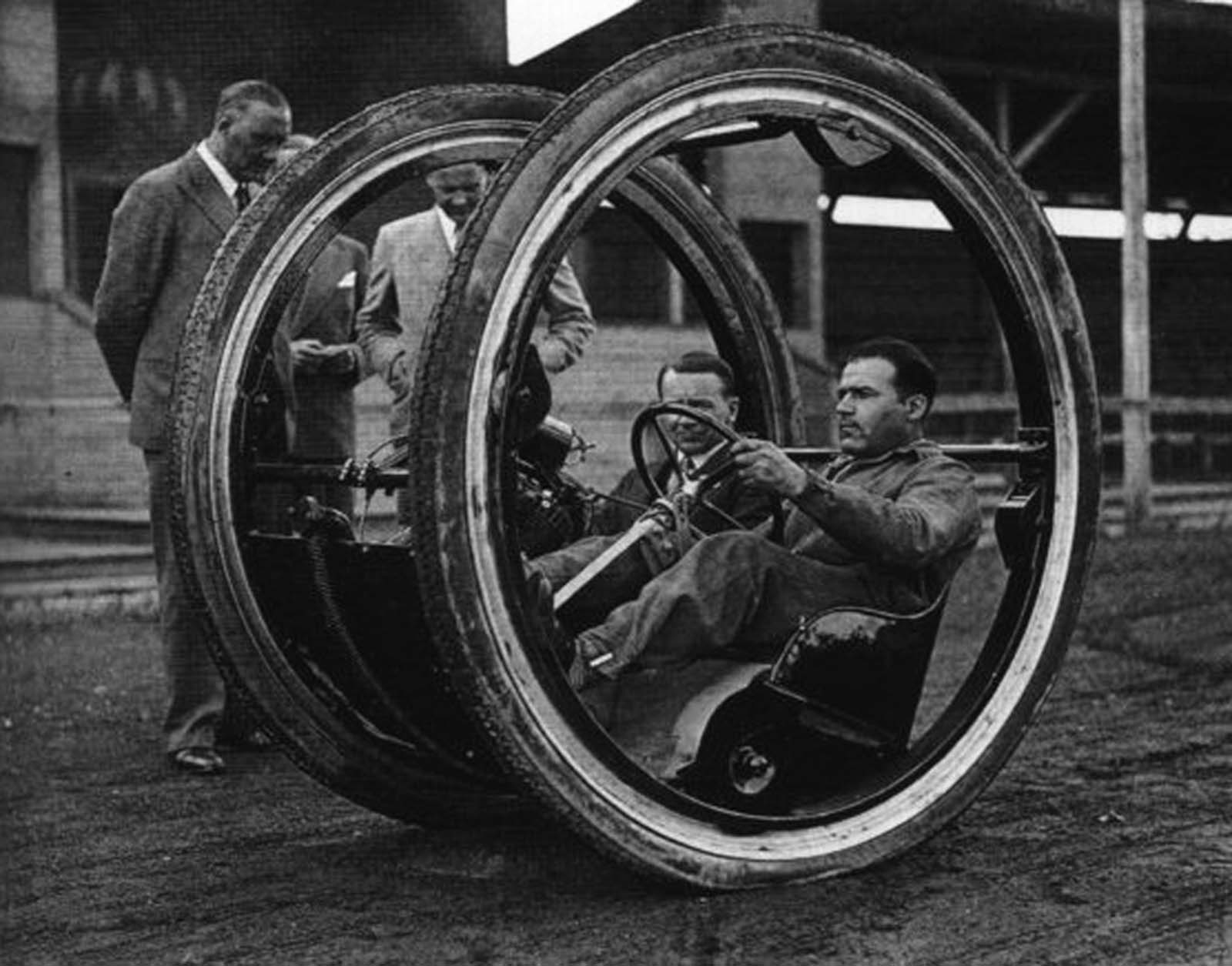Monowheel (also known as a monocycle) was often proposed as a new mode of transportation between the 1860s and the 1930s. They were different from unicycles because the rider sits inside the wheel’s circumference, rather than on top of it or outside it, and they function as a giant ball bearing. The engine propels the outer loop while the driver anchors the inner wheel. It stays upright by using the same principles as a gyroscope. A vehicle will remain in motion as long as an external force generates motion, in this case, an engine (although some monowheels are pedal-powered). Taking a turn was very tricky in Monowheels because they were difficult to handle due to the lack of other wheels and their awkward stance. To avoid tipping over, a rider should keep their feet close to the ground. Monowheel riders also had to rely on gravity to maintain an upright position, so if the machine accelerates or brakes too quickly, they spin inside it like a pet gerbil inside a wheel.
Several inventors created their monowheels, some driven by a human, some electric, some with gas motors. Still, all used the same basic principle: a smaller inner wheel presses against a giant outer wheel, allowing the vehicle to roll forward with the driver remaining level. Monowheels were considered difficult to use even at that time, and their use was described as “impractical for ordinary mortals.” Additionally, if it has a powerful engine, it’s unlikely that all of its power can be utilized. The lack of stability makes braking particularly difficult when forward motion is removed.
Monowheels models and inventors throughout the history
An inventor from France created the first known monowheel in 1869, but it had two wheels. The wheel had a seat inside. Beneath the seat was another, smaller wheel. To move the larger wheel, the rider pedaled the smaller wheel.
In the early 20th century, inventors began experimenting with monowheels powered by engines. Some inventors also incorporated airplane propellers in front of monowheels to help with steering. However, none of these designs have ever been manufactured. Science magazines began publishing designs for a car-like monowheel enclosed with metal and glass and could seat up to three passengers in the 1930s.
In 1932, Dr. J.H. Purves created a strange vehicle that is easily the most famous. It is believed that the Dynasphere reached speeds of up to 25 or 30 MPH.
Dr. Purves considered the monowheel the most simplified form of motorized transportation. His creation was never as successful as he had hoped. The vehicle was not very stable, could only carry one additional passenger, and had several other insurmountable design problems.
The monowheel failed to get the public’s attention. However, people still attempt to build and ride these machines, even if it is usually just for entertainment. Below are some historical photos that show different monowheels from the past.


